Howdy, Stranger!
It looks like you're new here. If you want to get involved, click one of these buttons!
Categories
- 956 All Categories
- 3 Picture Posting and Resizing
- 60 New Member Introductions
- 101 Off-Topic Forum
- 2 Photography
- 2 Resources
- 18 New Product Information
- 165 The SierraWest Forum
- 12 Brett's Blog
- 120 General News & Ramblings
- 3 Re-Release Information
- 1 Q & A about SierraWest
- 9 What Would You Like to See?
- 405 Builds
- 145 HO Scale Builds
- 185 O Scale Builds
- 58 Finished SW Build Pics
- 11 Miscellaneous Builds
- 185 Techniques
- 19 Working with Wood
- 23 Painting Castings
- 4 Masonry
- 16 Scenery
- 37 Tools and Supplies
- 22 Layout Planning & Building
- 38 Miscellaneous
- 19 Prototype Information
- 18 Reference and Research
Adding trash to trash cans
in Techniques
I stumbled onto an easy technique you might want to try that will add some depth and variety to the "junk" in your garbage and trash can castings.
If you follow the SW manual, a lot of times it will call for you to "swirl" paint onto your glass work surface. After you finish painting, you're left with blobs of dried paint all over your glass:
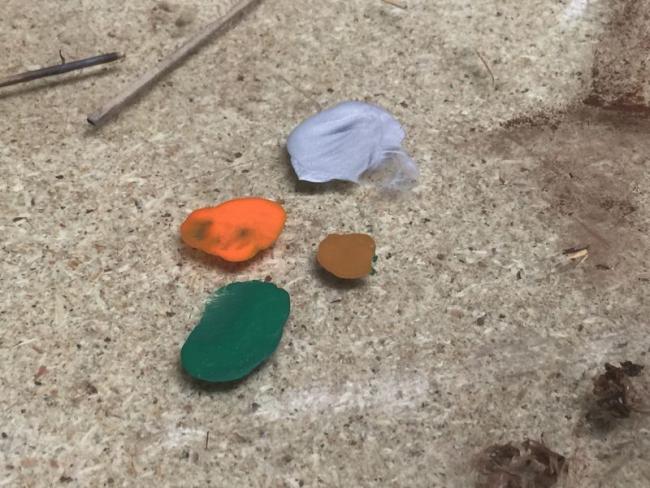
If you're like me, you clean this mess up with an old razor blade. Just scrape it and the dried paint peels and flakes right off. With acrylics (water soluble), even when dry, the paint blobs will still have a little flex to them--sort of a rubbery texture. Save this stuff:
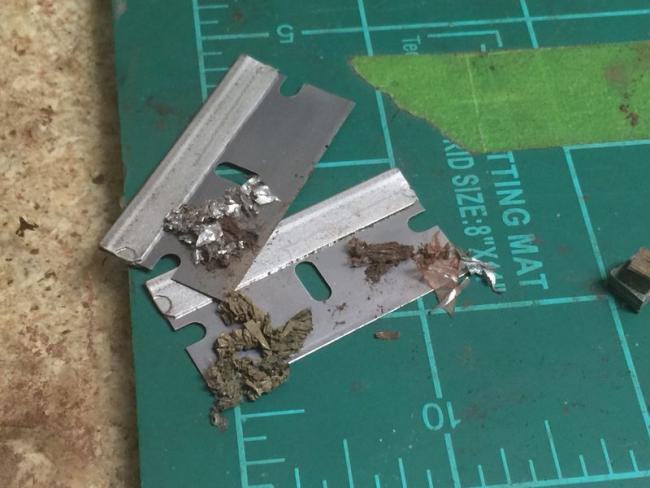
Add a little thinned out white glue to the interior of a garbage can casting, then apply the rubbery paint scrapings with a fine tweezers.
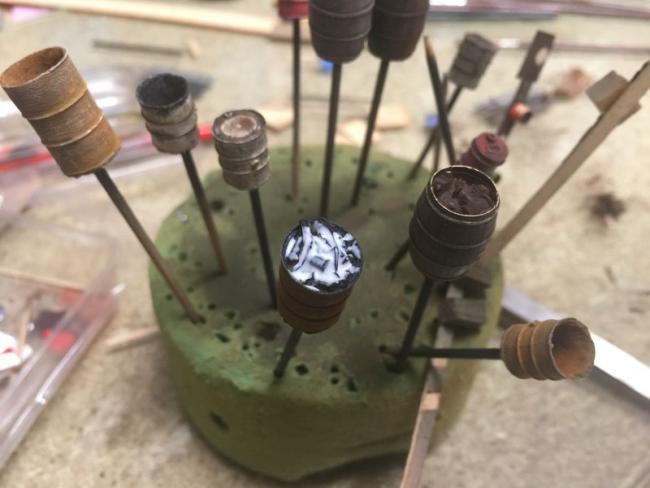
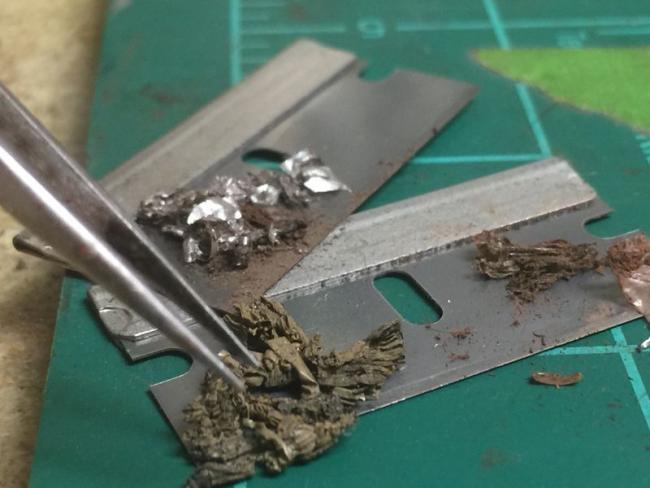
It's that simple! You'll get a ton of color variety and have a garbage can that's full of...garbage (not just pieces of stripwood)! Some things to keep in mind:
-Make sure the paint is dry.
-Keep the scrapings light and airy when adding them into the can. Don't compact them and crush a ton into the casting.
-As you continue to clean up your glass, scrape up dried chalk and mix that in with the paint scrapings. Really bright colors stand out and are too loud--even for garbage
-A little bit of dried metallic paint will look like scraps of metal.
-Longer pieces can be formed to look like an old rag hanging off the side of the can.
-Scrape up dried glue (white & CA) and chop it into fine particles. It looks like broken glass. (A small pile would look cool placed in front of a broom casting near a broken shop window or something).
Here's how mine turned out:
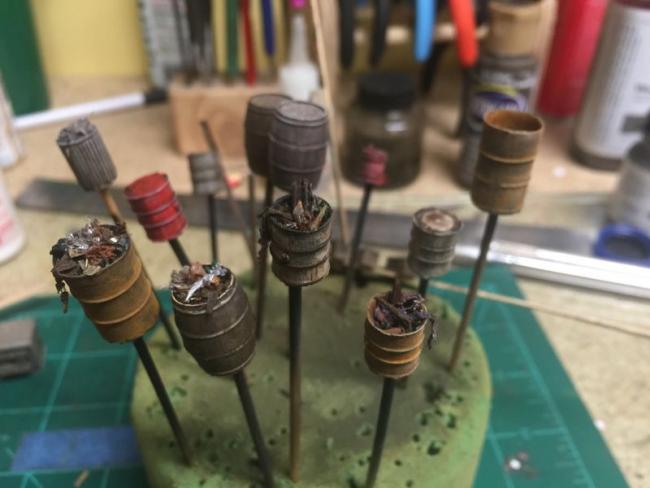
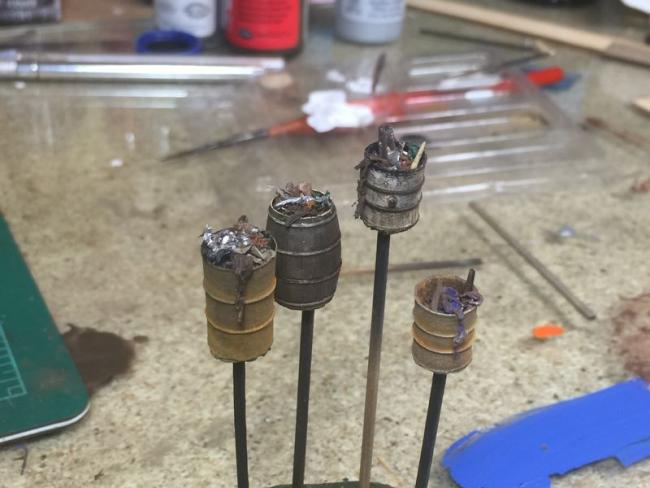
Have fun!
Post some pictures if you try this.
If you follow the SW manual, a lot of times it will call for you to "swirl" paint onto your glass work surface. After you finish painting, you're left with blobs of dried paint all over your glass:

If you're like me, you clean this mess up with an old razor blade. Just scrape it and the dried paint peels and flakes right off. With acrylics (water soluble), even when dry, the paint blobs will still have a little flex to them--sort of a rubbery texture. Save this stuff:

Add a little thinned out white glue to the interior of a garbage can casting, then apply the rubbery paint scrapings with a fine tweezers.


It's that simple! You'll get a ton of color variety and have a garbage can that's full of...garbage (not just pieces of stripwood)! Some things to keep in mind:
-Make sure the paint is dry.
-Keep the scrapings light and airy when adding them into the can. Don't compact them and crush a ton into the casting.
-As you continue to clean up your glass, scrape up dried chalk and mix that in with the paint scrapings. Really bright colors stand out and are too loud--even for garbage
-A little bit of dried metallic paint will look like scraps of metal.
-Longer pieces can be formed to look like an old rag hanging off the side of the can.
-Scrape up dried glue (white & CA) and chop it into fine particles. It looks like broken glass. (A small pile would look cool placed in front of a broom casting near a broken shop window or something).
Here's how mine turned out:


Have fun!
Post some pictures if you try this.


Comments
you gotta clean up your work area!
From now on instead of dumping this stuff into the prototype garbage can, I will put it in my 1/87 trash cans. Thanks for the idea.
Jerry
Geezerbill
I am however more excited about the broken glass, genius idea my friend and one I will use soon.
Thanks for sharing !!
Karl.A
A quick reminder: all of this "stuff" will look better (or, more natural) when dulled down with a coat of dark brown chalk. The paint tends to have a flat side and a more shiny side--which is a give away. Use an old soft brush, stab the powder in place, and you're good to go.